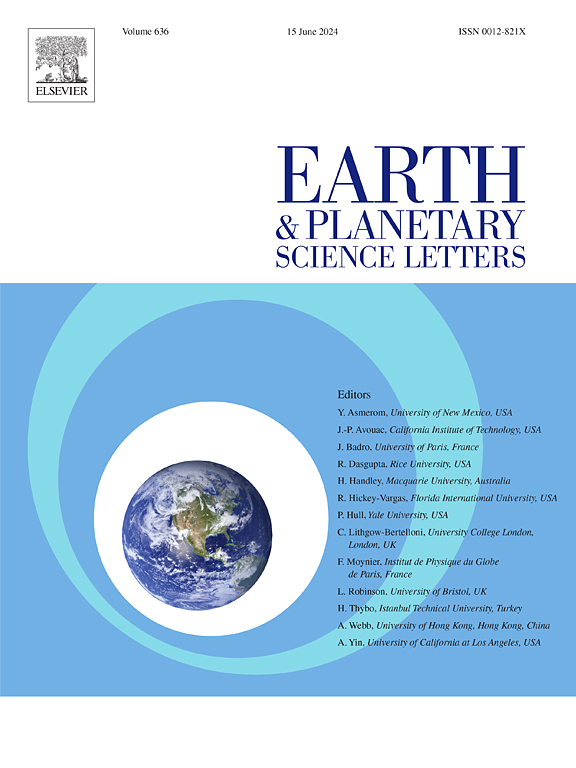Terrestrial ecosystem response to Early Cretaceous global environmental change: A calibrated, high-resolution Aptian record from Northeast China
IF 4.8
1区 地球科学
Q1 GEOCHEMISTRY & GEOPHYSICS
引用次数: 0
Abstract
Extensive studies of Aptian oceanic anoxic events and carbon cycle perturbations have significantly advanced our understanding of marine responses to global climate change. However, further exploration of possible volcanism–climate–environment linkages is hindered by the scarcity of continuous, well-documented terrestrial records. In an attempt to address this gap, the Yanshan Scientific Drilling Project extracted a 1497.5 m core from the shale-dominated, lacustrine, Jiufotang Formation in the Kazuo Basin of Northeast China. High-precision U-Pb geochronology of two interlayered tuffs yielded depositional ages of 121.05 ± 0.32 Ma and 117.359 ± 0.031 Ma, and a Bayesian age-depth model for the lower half of the formation. An astrochronological model based on δ13Corg and major element chemostratigraphy has suggested a duration of 9.03–9.14 Ma for the entire core, from 121.05 to 121.30 to 111.91–112.20 Ma. A 75.2 m core interval with unequivocal correlation to the oceanic anoxic event (OAE) 1a was identified by carbon isotope stratigraphy, which has a calibrated onset at 120.2 Ma and a total duration of ca. 450 kyr. Our results highlight the potential of lacustrine strata in recording at high-resolution the marine-correlated carbon cycle changes and in deciphering the drivers and mechanisms of climate change across the marine and terrestrial realms.
求助全文
约1分钟内获得全文
求助全文
来源期刊

Earth and Planetary Science Letters
地学-地球化学与地球物理
CiteScore
10.30
自引率
5.70%
发文量
475
审稿时长
2.8 months
期刊介绍:
Earth and Planetary Science Letters (EPSL) is a leading journal for researchers across the entire Earth and planetary sciences community. It publishes concise, exciting, high-impact articles ("Letters") of broad interest. Its focus is on physical and chemical processes, the evolution and general properties of the Earth and planets - from their deep interiors to their atmospheres. EPSL also includes a Frontiers section, featuring invited high-profile synthesis articles by leading experts on timely topics to bring cutting-edge research to the wider community.
 求助内容:
求助内容: 应助结果提醒方式:
应助结果提醒方式:


